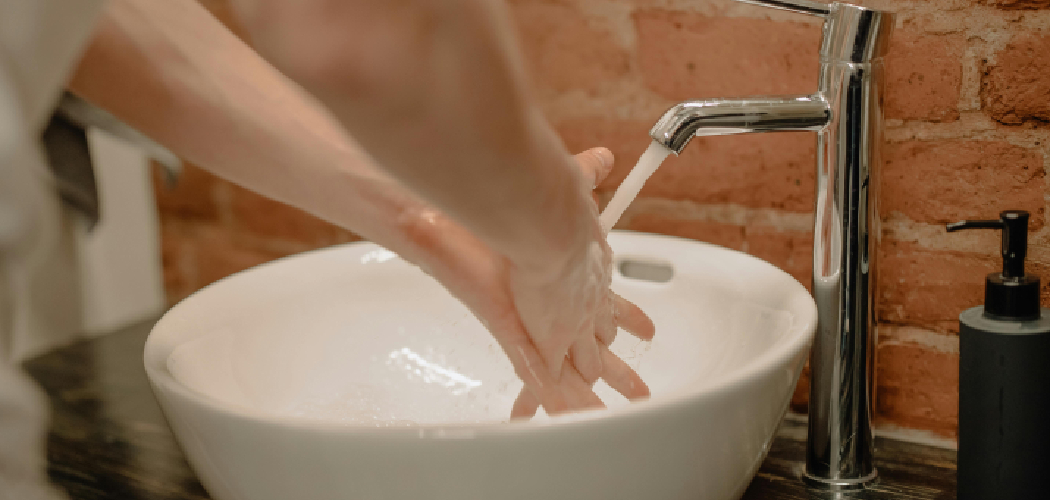Preventing water around the sink is crucial for maintaining a clean and dry bathroom or kitchen environment. Water accumulation around the sink can lead to unsightly stains, mold growth, and damage to surrounding fixtures and surfaces. In this comprehensive guide, we’ll explore various methods and techniques for how to prevent water around sink.
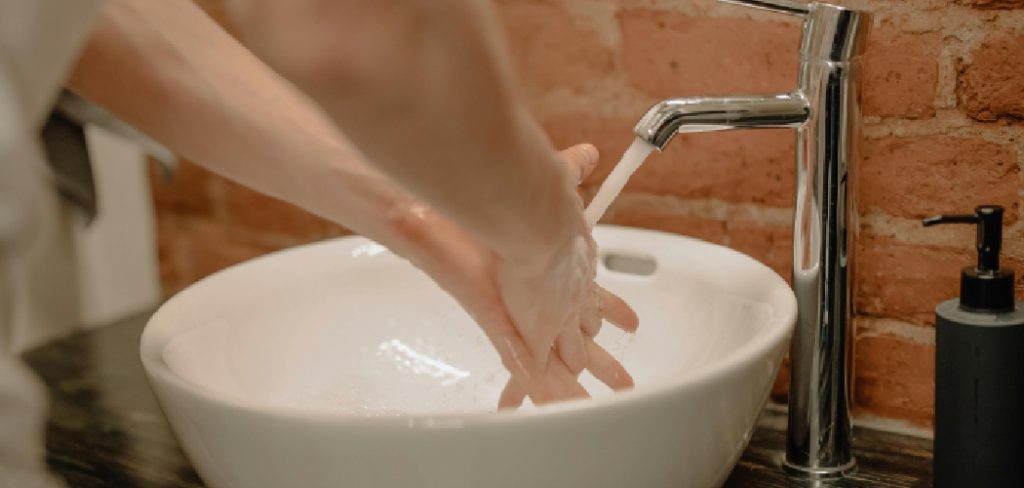
From simple measures like wiping up spills promptly to more involved solutions like installing splash guards and sealing gaps around the sink, we’ll cover everything you need to know to keep your sink area clean, dry, and free from water damage.
Whether you’re dealing with occasional splashes or chronic water issues, mastering the art of water prevention around the sink will help you maintain a hygienic and functional space for cooking, cleaning, and daily activities.
Importance of Preventing Water Around the Sink
Preventing water from accumulating around the sink area is more than just a matter of cleanliness; it’s essential for safeguarding the longevity and integrity of your kitchen and bathroom spaces.
First and foremost, persistent moisture can facilitate the growth of mold and mildew, which not only poses health risks but can also emit unpleasant odors and degrade the appearance of your space. Additionally, water exposure can damage cabinetry and countertops, leading to warping, discoloration, and the deterioration of materials.
This not only affects the aesthetic appeal of your space but can also result in costly repairs or replacements. By taking proactive steps to keep the area around your sink dry, you’re not just maintaining a clean and inviting environment; you’re also protecting your investment and ensuring the durability of your living spaces.
Common Issues Caused by Water Around the Sink
Allowing water to persist around the sink area can lead to several problematic outcomes. Firstly, Water Damage to Countertops and Cabinets is one of the most noticeable consequences. Materials like wood and laminate can absorb water, leading to swelling, warping, and even the breakdown of structural integrity.
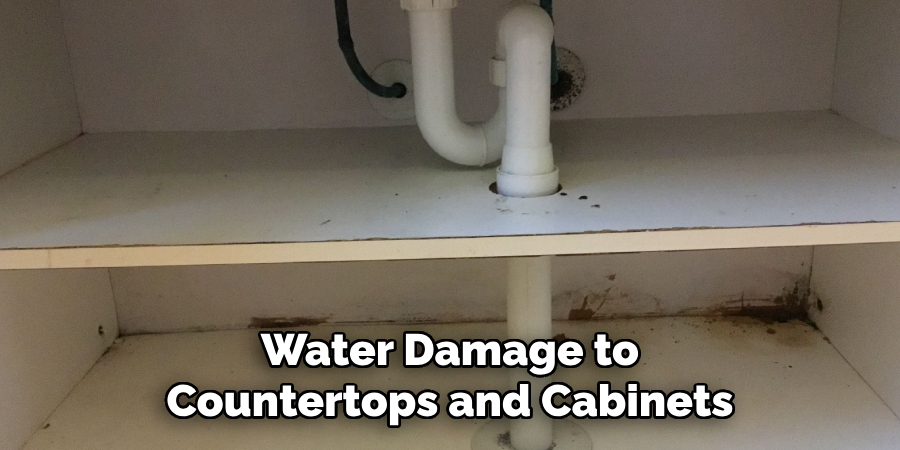
Over time, the aesthetic appeal and functionality of these features can be significantly compromised. Mold and Mildew Growth presents not only a significant health hazard but also contributes to unpleasant odors and stains that are difficult to remove. Given the right conditions, mold can proliferate rapidly, requiring professional remediation to address.
Lastly, Slip Hazard is a crucial safety concern; water accumulated on the floor around the sink can pose a risk of slips and falls, leading to potential injuries. Addressing water accumulation proactively can prevent these issues, maintaining the safety, appearance, and durability of your space.
Causes of Water Accumulation Around the Sink
Several factors contribute to the accumulation of water around the sink, each necessitating specific preventative measures. Firstly, Splash-Over from the Sink is a common culprit. Activities such as washing dishes or hands can cause water to splash onto the surrounding surfaces.
Secondly, Leaky Faucets or Plumbing are significant contributors. Even minor drips can cause considerable water accumulation over time. Poor Drainage can also lead to water pooling around the sink. If water doesn’t flow freely down the drain, it may overflow or accumulate in the sink, leading to spillage onto the countertop.

Additionally, High Humidity Levels in kitchens or bathrooms can cause condensation on cold surfaces, including around the sink area. Lastly, Inadequate Sealing Around the Sink allows water to seep under the sink edge and into the countertop or cabinet below, resulting in damage and mold growth. Identifying and addressing these causes is crucial for implementing effective water prevention strategies around the sink.
Types of Faucet Leaks
Faucet leaks can be both a primary cause of water accumulation around the sink and a nuisance that leads to increased water bills and potential water damage if left unaddressed. Understanding the types of faucet leaks is crucial for troubleshooting and applying the correct repair solution. Here are the most common types:
- Leaky Spout: This type of leak occurs when water drips or flows from the faucet spout when it is turned off. It’s often caused by worn-out rubber washers, O-rings, or seals within the faucet assembly, which fail to form a tight seal.
- Handle Leaks: These leaks appear around the base of the faucet handle. They can be indicative of a deteriorated O-ring or seal within the handle mechanism. Handle leaks may not only contribute to water waste but can also lead to water damage on the countertop.
- Base Leaks: Base leaks emerge at the point where the faucet body meets the sink or countertop. These leaks might signify a failure in the caulking or sealing, allowing water to seep through and accumulate underneath the sink.
- Valve Seat Corrosion: The valve seat serves as a connection between the faucet and the spout in the compression mechanism. Over time, water sediments can corrode the valve seat, leading to a leak at the base of the spout.
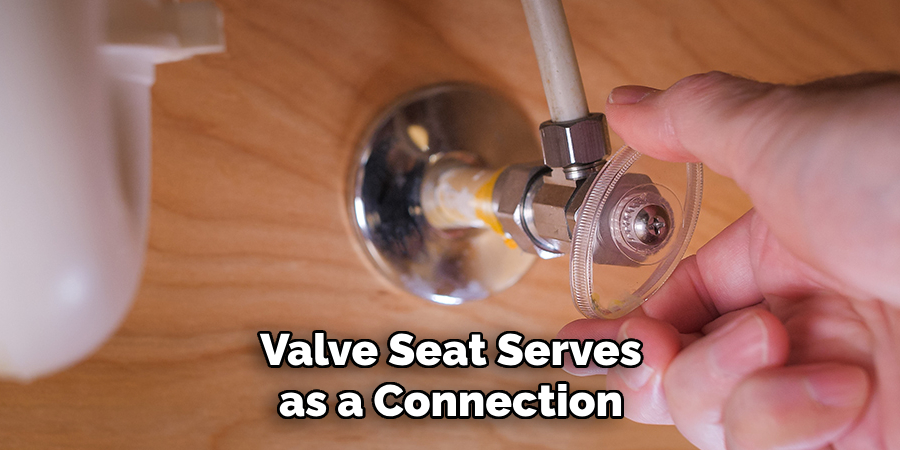
Identifying the specific type of faucet leak is the first step toward applying the appropriate fix, whether it involves replacing worn parts like washers and seals, re-caulking the base of the faucet, or in some cases, installing a new faucet to ensure a watertight seal and prevent future leaks.
Consequences of Faucet Leaks on Water Accumulation
Faucet leaks, while often perceived as minor inconveniences, can have profound consequences on water accumulation and the overall health of your home environment. The steady drip or stream from a leaking faucet not only contributes to an immediate increase in water wastage, raising utility bills, but it also plays a significant role in the exacerbation of water damage around the sink area.
Continuous exposure to water encourages the degradation of materials, such as countertops and cabinetry, leading to potential structural failures and the need for expensive repairs or replacements.
Furthermore, the persistent presence of moisture creates an ideal breeding ground for mold and mildew, which can spread beyond the immediate area, posing health risks and requiring intensive remediation efforts. Over time, the effects of unchecked faucet leaks can lead to compounded issues, emphasizing the importance of addressing even the most minor leaks promptly to prevent long-term water accumulation and associated damages.
Improper Sink Installation or Sealing
Improper installation or sealing of sinks stands as a pivotal factor contributing to water accumulation and subsequent damage in residential areas. An incorrectly installed sink may have gaps between the sink basin and the countertop, or it might not be leveled properly.
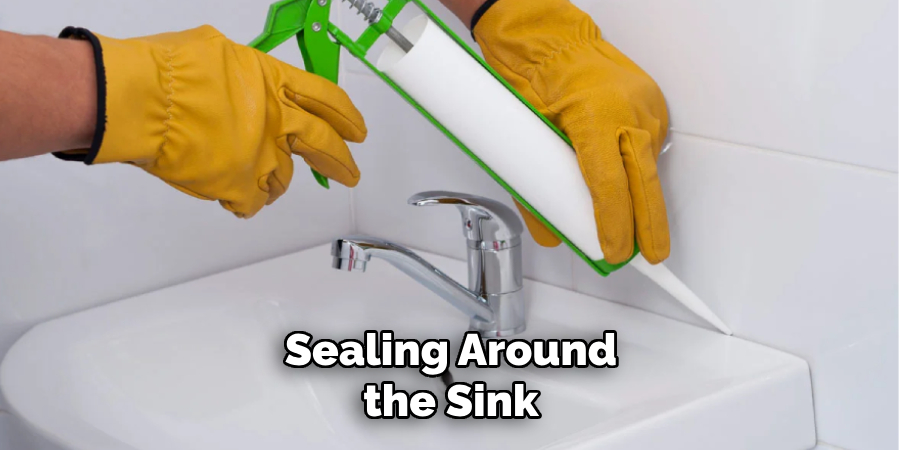
These gaps not only permit water to seep through but also compromise the integrity of the sealant, exacerbating the issue over time. Similarly, inadequate or degraded sealing around the sink can facilitate the movement of water into areas it shouldn’t reach, such as the underlying cabinetry or the substructure of the countertop.
This not only accelerates wear and tear but also sets the stage for mold and mildew proliferation. Ensuring a precise sink installation and maintaining the sealant in prime condition are indispensable steps to mitigate the risks of water damage and maintain a hygienic and safe kitchen or bathroom environment.
10 Methods How to Prevent Water around Sink
1. Install a Splash Guard:
Installing a splash guard is one of the most effective ways to prevent water from splashing out of the sink. Splash guards are typically made of durable materials like plastic or metal and are designed to fit around the edges of the sink to contain splashes. Choose a splash guard that is compatible with your sink size and style, and ensure that it is securely attached to the sink to prevent water from escaping.
After installing a splash guard, you can further enhance its effectiveness by regularly cleaning and maintaining it. Over time, debris and mineral deposits can build up on the surface of the splash guard, making it less effective at containing water splashes. To clean your splash guard, use a mild cleaner or vinegar solution and scrub away any buildup with a soft cloth or brush. Rinse thoroughly and dry with a clean cloth.
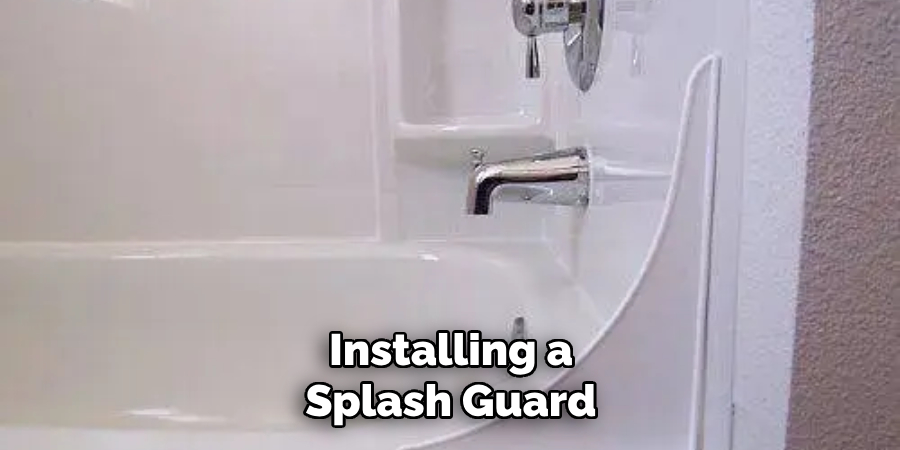
2. Use a Sink Mat:
Placing a sink mat at the bottom of the sink can help prevent water from splashing onto surrounding surfaces. Sink mats are usually made of rubber or silicone and feature raised edges to contain water.
They provide a cushioned surface for dishes and utensils and help prevent damage to the sink basin. Choose a sink mat that fits your sink dimensions and is easy to clean and maintain. Sink mats are available in different colors and designs, so you can choose one that complements your kitchen decor.
Sink mats can also be used to protect delicate dishes from getting scratched or damaged while washing. The raised edges of the mat create a barrier between the dishes and the sink surface, preventing any direct contact. This is especially useful for delicate glassware or expensive china.
3. Adjust Water Flow:
Adjusting the water flow from the faucet can help prevent excessive splashing around the sink. Turn the water flow down to a gentler stream when performing tasks like washing dishes or rinsing vegetables. Avoid turning the water on too high, as this can create more splashing and increase the risk of water spilling over the edges of the sink.
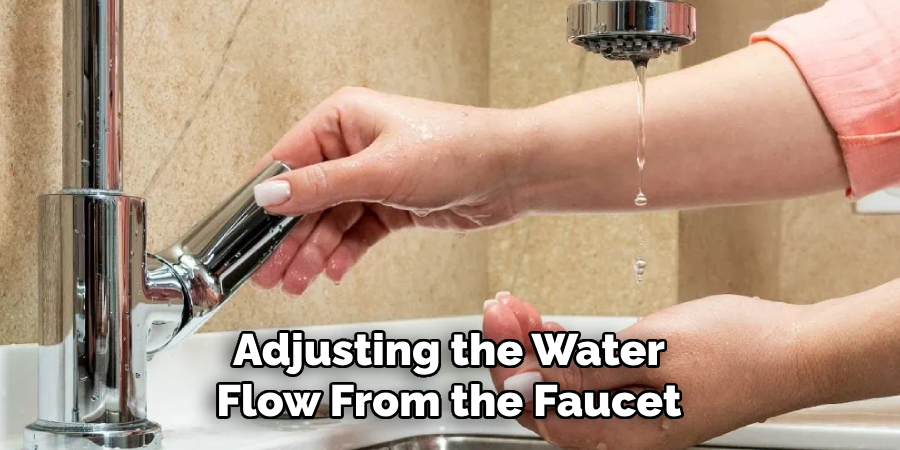
You can also consider installing a faucet aerator, which helps to control and reduce the water flow. Although adjusting the water flow may seem like a small step, it can make a significant impact on your water usage and reduce the amount of clean-up required after using the sink.
4. Use a Deep Sink:
Choosing a deep sink can help contain water and prevent it from splashing onto surrounding surfaces. Deep sinks provide more space for water to collect, reducing the likelihood of spills and splashes. Consider replacing your current sink with a deeper model if you frequently experience water-related issues around the sink area.
Deep sinks are also great for washing larger items such as pots and pans, making them a practical choice for those who enjoy cooking. Additionally, deep sinks can be beneficial for people with mobility issues as they require less bending over to reach the bottom of the sink.
5. Seal Gaps and Cracks:
Inspect the area around the sink for any gaps or cracks where water could seep through and cause damage. Use a waterproof sealant or caulk to seal any gaps between the sink and countertop, as well as any cracks in the grout or tile. Ensure that the sealant is applied evenly and allowed to dry completely before using the sink. This will prevent water from leaking and causing damage to the surrounding areas.
You can also use expanding foam sealant to fill in larger gaps or holes around pipes or plumbing fixtures. This type of sealant expands as it dries, creating a watertight barrier that is resistant to both water and air. However, be careful not to overfill the gaps, as this may cause damage to the sink or surrounding areas.
6. Use a Drip Tray:
Placing a drip tray under the faucet can help catch any water that drips from dishes or utensils and prevent it from pooling around the sink. Drip trays are typically made of plastic or metal and feature raised edges to contain water. Choose a drip tray that fits the space under your faucet and is easy to clean and maintain. When needed, simply empty the tray and wipe it down with a damp cloth to keep your sink area clean and dry.
Additionally, drip trays can also be used for other purposes in the kitchen. They can be placed under potted plants to catch any excess water that drains from the bottom, preventing damage to countertops or floors. Drip trays can also be used as a makeshift drain board for dishes that need to air dry. Simply place the tray next to the sink and stack dishes on top of it.
7. Clean and Unclog Drains Regularly:
Regularly cleaning and unclogging drains can help prevent water from backing up and overflowing around the sink. Use a drain cleaner or a homemade solution of baking soda and vinegar to remove any buildup of grease, food particles, or soap scum from the drains.
Additionally, use a drain snake or plunger to remove any clogs that may be causing water to accumulate around the sink. This simple task can save you from dealing with costly plumbing repairs in the future.
It is also important to note that regular maintenance of drains can help prevent foul odors from forming in your kitchen or bathroom. The buildup of debris and bacteria in clogged drains can lead to unpleasant smells, which can be easily avoided by regularly cleaning them.
8. Use a Towel or Rag:
Keeping a towel or rag handy near the sink can help quickly absorb any spills or splashes and prevent water from spreading to surrounding surfaces. Encourage family members to wipe up spills promptly to prevent water damage and maintain a clean and dry environment around the sink. Additionally, a designated towel or rag can also be used to dry hands after washing them, reducing the use of paper towels.
This simple habit not only helps maintain cleanliness and hygiene but also reduces waste. It’s a small step towards being environmentally conscious and can save you money on buying paper towels. You can even designate different colored towels for each family member to avoid mixing them up.
9. Install a Faucet with a Sprayer Attachment:
Installing a faucet with a sprayer attachment can help control water flow and prevent excessive splashing around the sink. Sprayer attachments allow you to direct water precisely where you need it, reducing the risk of splashing onto surrounding surfaces.
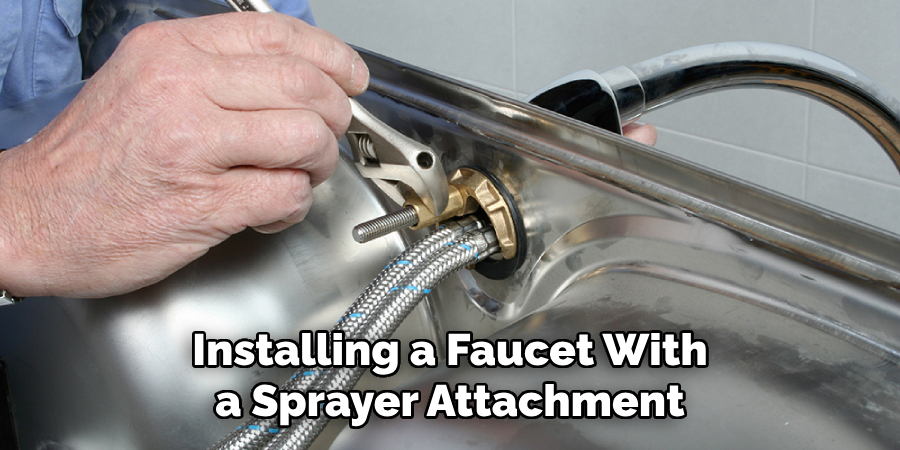
Choose a faucet with adjustable water flow settings and a flexible hose for added convenience. Follow these steps to install a faucet with a sprayer attachment in your kitchen or bathroom.
10. Educate Family Members:
Educating family members about proper sink usage and water conservation practices can help prevent water-related issues around the sink. Teach children to turn off the faucet tightly after use and to avoid playing with water unnecessarily. Encourage everyone in the household to be mindful of water usage and to clean up any spills or splashes promptly to prevent water damage and maintain a clean and dry sink area.
It is also important to educate family members on how to properly dispose of food scraps and other waste in the kitchen sink. Remind them not to pour grease, oil, or coffee grounds down the drain, as these can clog pipes and cause issues with the plumbing system. Instead, encourage them to use a strainer or compost bin for food scraps and dispose of oils and coffee grounds in the trash.
Conclusion
In conclusion, effectively preventing water around the sink is crucial for maintaining a clean and functional kitchen or bathroom environment. This comprehensive guide offers practical strategies and tips to address common issues such as leaks, spills, and drips. By implementing proper sink installation techniques, regular maintenance practices, and smart water usage habits, individuals can minimize water-related problems and preserve the integrity of their sink area.
Additionally, utilizing sink accessories and additions, such as splash guards and sink mats, can provide an extra layer of protection against water spills. Remember, proactive measures play a significant role in preventing water damage and maintaining a tidy sink area. Thanks for reading, and we hope this has given you some inspiration on how to prevent water around sink!

